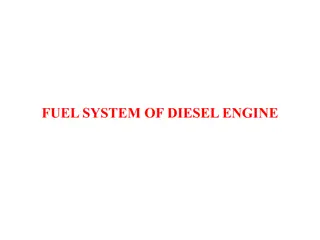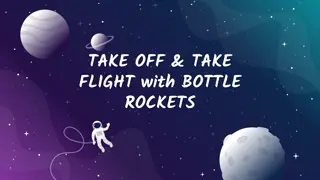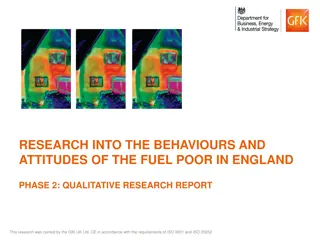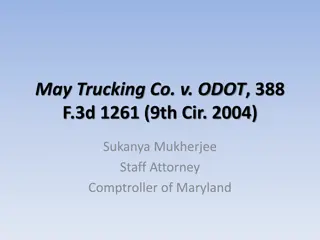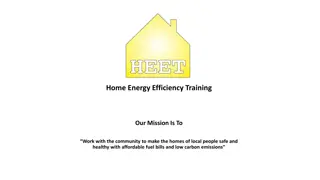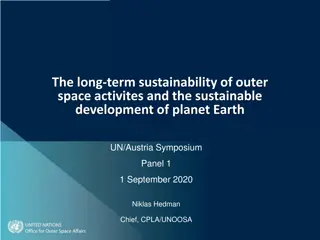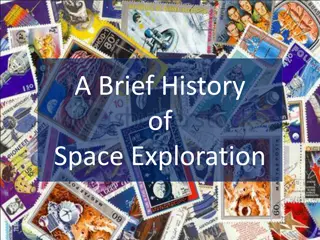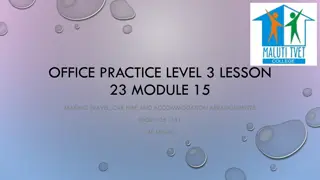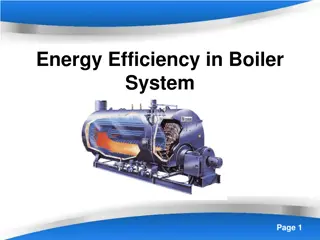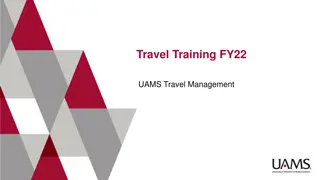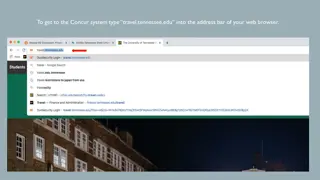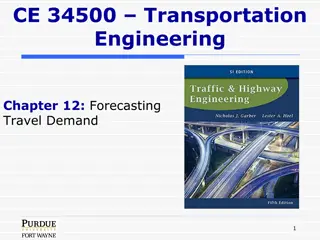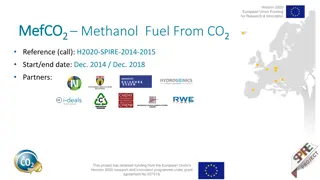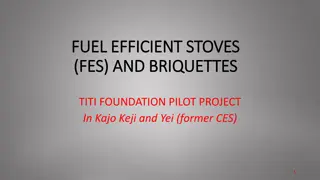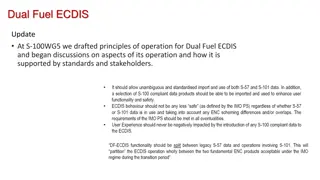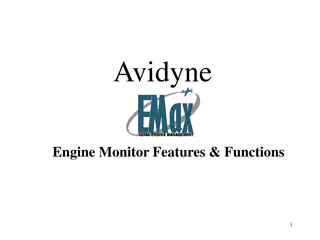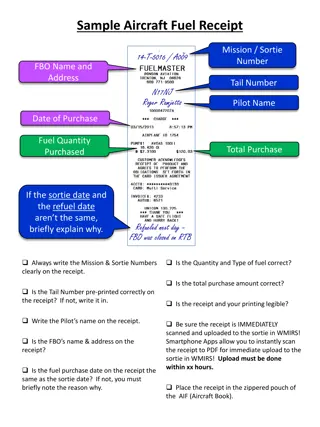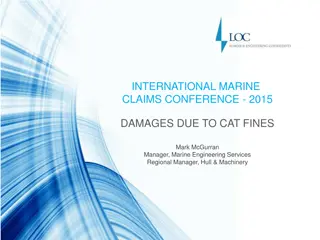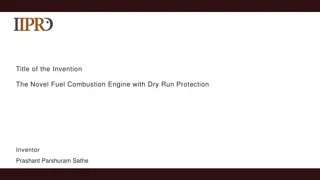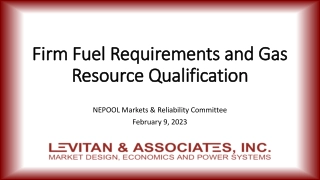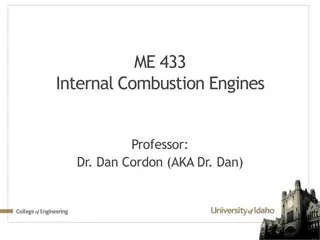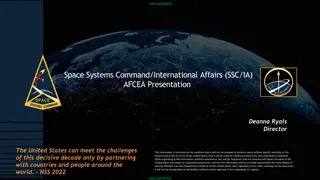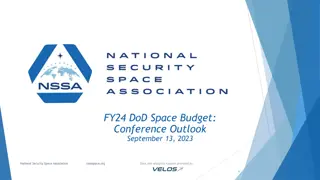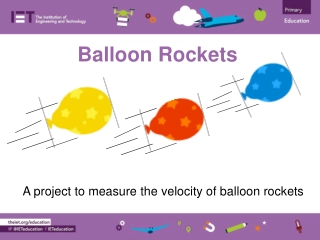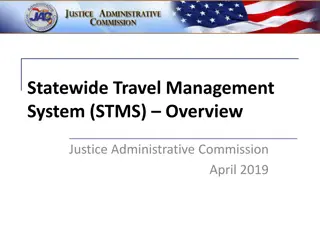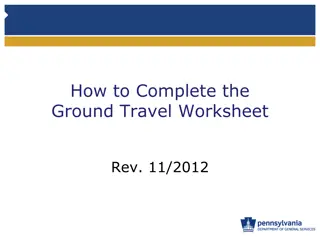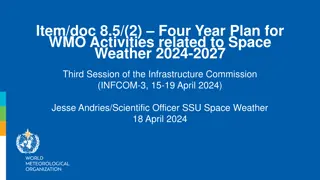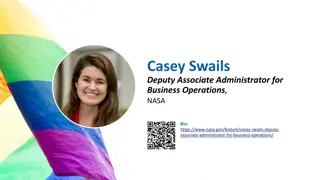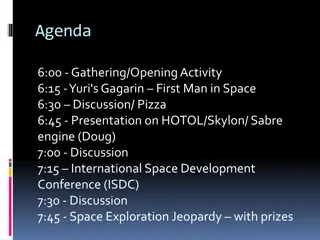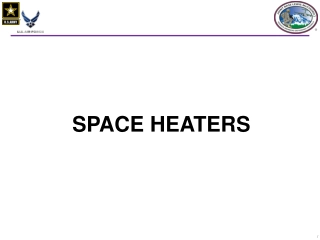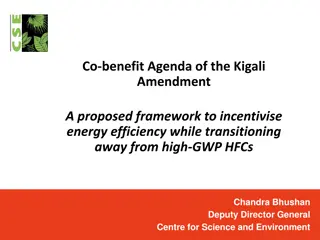The Trouble with Rockets: Fuel Efficiency and Space Travel Challenges
Rockets face challenges due to the need to carry their own fuel, with various propulsion methods offering different levels of efficiency. From chemical rockets to advanced technologies like Ion Engines and Laser Ablation Plasma, the quest for efficient space travel continues. By considering specific impulse and mass ratios, long-term scenarios for reaching destinations within the solar system and beyond are explored, suggesting the feasibility of star travel over millennia.
Download Presentation

Please find below an Image/Link to download the presentation.
The content on the website is provided AS IS for your information and personal use only. It may not be sold, licensed, or shared on other websites without obtaining consent from the author. Download presentation by click this link. If you encounter any issues during the download, it is possible that the publisher has removed the file from their server.
E N D
Presentation Transcript
The Trouble with Rockets Some slightly discouraging news for the would-be space traveler Danny Hillis, Visiting Professor, MIT Media Lab
Rockets use most their mass to carry their own fuel Tsiolkovsky Tsiolkovsky rocket equation: rocket equation: ? = ????? ln(??????? ????????) ? ????? ???????= ???????? ?
Measuring Fuel Performance: Specific Impulse
Rocket Propellant Comparison Fuel Specific Impulse (Seconds) Bottle Rocket (compressed air) .3 Gunpowder (burning air) 80 Jet Fuel (burning in air) 3000 (about an hour!) Solid Rocket 250 Liquid Oxygen/ Hydrogen rocket 450 Lithium/Fluorine/Hydrogen (best chemical) 542 Ion Engine (tested) 3100 Orion (Atomic Bombs) 4000 (calculated) RF Plasma (VASIMR) 5000 Laser Ablation Plasma 10,000 (calculated) Dual Stage Ion Engine 20,000 (calculated)
Chemical Rockets Range of Best Chemical Fuels
Orion-Like Atomic Rockets Chemical Atomic (Orion)
But, the stars are still beyond reach... 2-stage Ion Laser Plasma Ion Atomic RF Plasma
Are you willing think long term? RF Laser Plasma Ion Plasma Mass Ratio 500 400 Earth Orbit Mars Solar system Alpha Centauri in 10,000 Years 300 200 100 (140 Km/sec) Impluse Specific 0 2000 4000 6000 8000 10000 Atomic (Orion) Atomic (Orion II)
Conclusion: On a 10,000-year time scale, even star travel is feasible.


